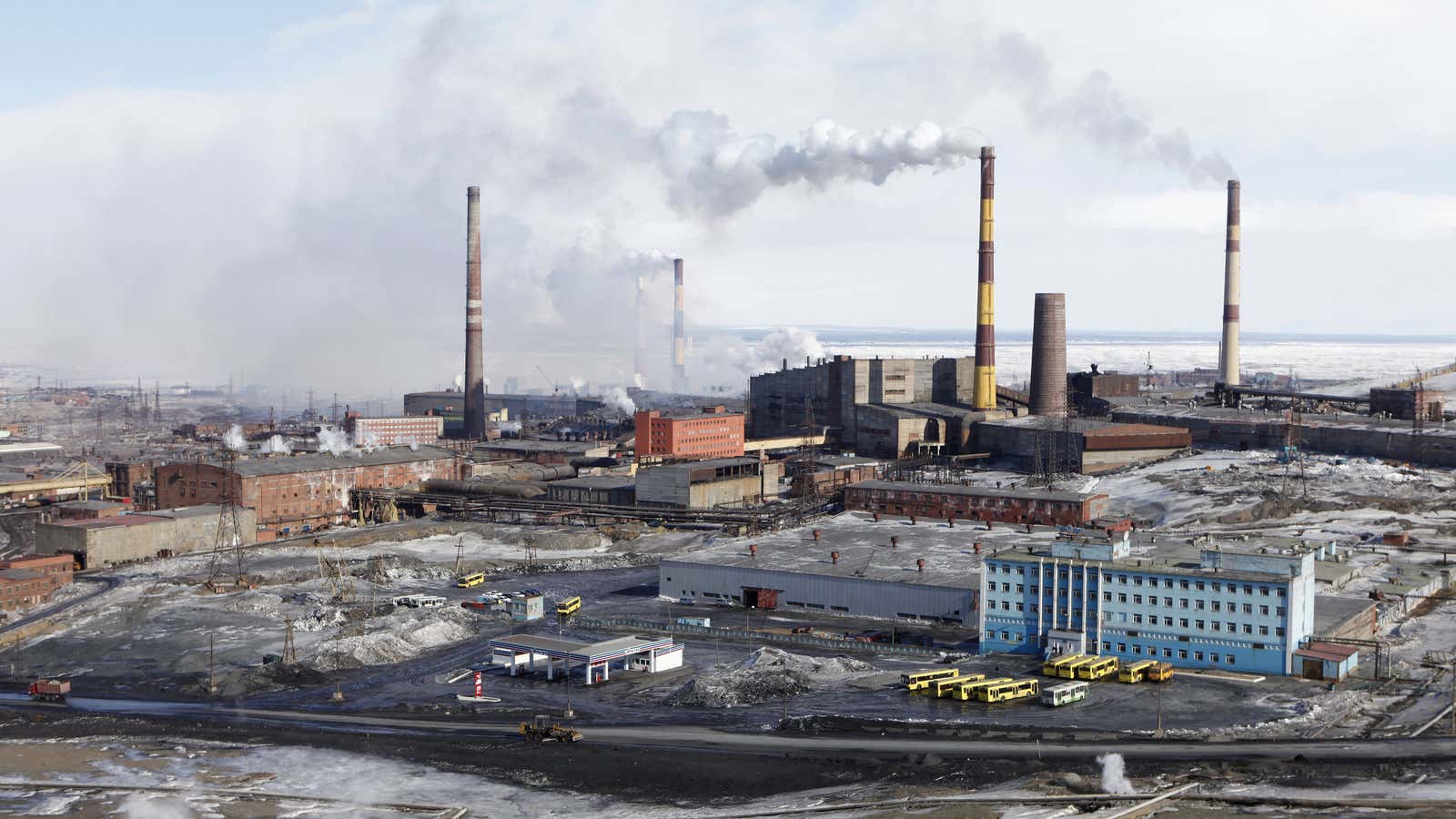It’s almost April 15, and you may be worrying about how much taxes will hurt this year. But a new study published today suggests there’s a whole world of economic losses in the air around us that few of us know anything about.
The study, published in the journal Climatic Change, is the first to pull together a proper accounting of the hidden costs of greenhouse gas emissions. It shows the true (and much higher) cost that we pay in dollars at the pump and light switch—or in human lives at the emergency room.
Drew Shindell, a professor at Duke University, has attempted to play CPA to our industrialized emitting world. He has tabulated what he calls “climate damages” for a whole range of greenhouse gases like CO2, aerosols, and methane—and more persistent ones like nitrous oxides.
If these damages are added in like the gas tax, a gallon of regular in the United States would really cost $6.25. The price of diesel would be a whopping $7.72 a gallon.
Shindell also estimated the yearly damages from power plants in the U.S. Using coal costs us the most, with climate damages adding an almost 30 cents per kilowatt hour to the current price of 10 cents we now pay. The gas-fired power price rises to 17 cents from 7 cents per kilowatt hour.
For the average homeowner who uses natural gas, your real bill after climate damages is double. And for those of us who get their electricity from coal-fired power plants, our energy bills are really four times what we see in our monthly statements.
Shindell calculates the total yearly emissions price tag—between transportation, electricity, and industrial combustion—at between $330-970 billion. That wide spread depends on the choice of a discount rate, which reflects the relative value of money over the years and decades of climate change to come.
(Renewables and nuclear, though they may appear more expensive than natural gas in the near-term at around 10 cents per kilowatt hour, carry little to no climate damage bill, now, or at any time in the future.)
Central to those estimated economic damages are the costs we pay in human lives.
“Air pollution in the United States sends about 150,000 people to the hospital every year and causes 180,000 non-fatal heart attacks,” Shindell told Quartz. That toll goes on our health bill directly and costs the economy indirectly in lost work days and lowered productivity. And that’s if people recover.
Shindell said air pollution’s fatal effects—and costs—are even higher globally. “Around the world air pollution is the single leading environmental cause of death,” he said. “It’s not necessarily that people pay out of their pockets, but they’re dead.”
We’ve long known that air pollution kills and the climate change is a threat. But normally, pollution is looked at as a present-day environmental health issue. Climate is a global weather problem—only starting to be felt now—that mostly concerns the future. The challenge, unmet until now, has been to pull two very separate scientific worlds together. But money is a universal language.
“What I’m trying to do is provide a basic, widely-generalizable metric where you can say, this is how much it costs per pound of any individual pollutant that’s emitted,” said Shindell.
His economic model allows him to put a price per ton emitted on 10 different pollutants to find out what they will cost us in terms of global and regional climate changes and human health.
“I think Shindell’s study is sound and the nuances are new—and the more we learn about the nuances the better we are as a scientific community,” said Gary Yohe, an environmental economics professor at Wesleyan University and an editor of the Climatic Change journal, in an interview.
And nuances, according to Yohe, are what’s needed when dealing with an issue the size of climate change. “Climate is the poster child for extraordinarily difficult, global public goods problem with ample opportunity for free-riding,” he told Quartz.
That means that it’s an economic muddle. Emissions create many winners and losers around the world. And climate is full of risks and uncertainties. Planning action on climate change is so difficult it can easily cause economic and political paralysis. But Shindell’s metric, called the “Social Cost of Atmospheric Release,” could provide some common ground from which to work.
“The question is, what do we do now and what do we monitor for the next 20 years so that we can make intelligent mid-course corrections, and convey that to the economic community in a way that doesn’t cause extra damage and harm?” Yohe told Quartz. “If I really add Shindell’s damages into my mental calculation, it could make a difference.”
Shindell says that those mental calculations make sense, even if you’re not an economist.
He told Quartz: “We’re thinking, it’s too expensive to switch to solar and wind because we’ll have to build new power lines, and we’ll have to pay money for this and that, but we forget that the current system is super, super expensive.”
Shindell said the costs of greenhouse gases are always there, we just don’t see them because they come up as a healthcare bill or an insurance bill or as dead people. But he also said that we don’t remember that those costs are within our control once we know what they are.
“A better sense of the real costs might help people realize what choices they’re actually making,” he said.
